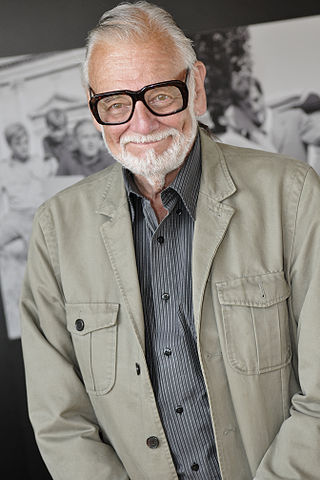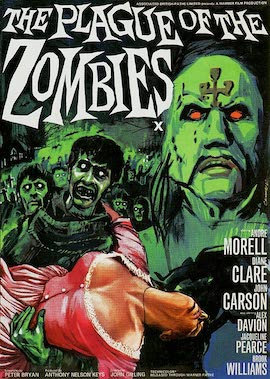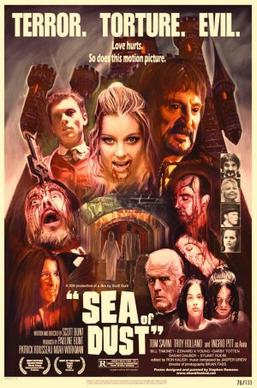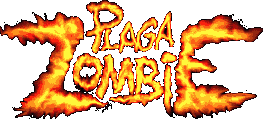
Stagecoach is a 1939 American Western film directed by John Ford and starring Claire Trevor and John Wayne. The screenplay by Dudley Nichols is an adaptation of "The Stage to Lordsburg", a 1937 short story by Ernest Haycox. The film follows a group primarily composed of strangers riding on a stagecoach through dangerous Apache territory.

George Andrew Romero Jr. was an American-Canadian film director, writer, editor and actor. His Night of the Living Dead series of films about a zombie apocalypse began with the original Night of the Living Dead (1968) and is considered a major contributor to the image of the zombie in modern culture. Other films in the series include Dawn of the Dead (1978) and Day of the Dead (1985).

The distinction between horror and terror is a standard literary and psychological concept applied especially to Gothic and horror fiction. Horror is the feeling of revulsion that usually follows a frightening sight, sound, or otherwise experience. By contrast, terror is usually described as the feeling of dread and anticipation that precedes the horrifying experience.
A television producer is a person who oversees one or more aspects of a television program. Some producers take more of an executive role, in that they conceive new programs and pitch them to the television networks, but upon acceptance they focus on business matters, such as budgets and contracts. Other producers are more involved with the day-to-day workings, participating in activities such as screenwriting, set design, casting, and directing.

The Plague of the Zombies is a 1966 British horror film directed by John Gilling and starring André Morell, John Carson, Jacqueline Pearce, Brook Williams, and Michael Ripper.

Matthew James Holness is an English comedian, director, author, plus actor. He is known for creating and portraying the fictional horror author Garth Marenghi.

Sylvia Young Theatre School is an independent school in Marble Arch, London, England. It is a specialist performing arts school named after its founder and principal, Sylvia Young OBE.

Austin Film Festival (AFF), founded in 1994, is an organization in Austin, Texas, that focuses on writers' creative contributions to film. Initially, AFF was called the Austin Heart of Film Screenwriters Conference and functioned to launch the careers of screenwriters, who historically have been underrepresented within the film industry.

Sea of Dust is a 2008 horror-fantasy film directed by Scott Bunt and starring Tom Savini and Ingrid Pitt. It takes its name from the boundary separating reality from religious truth, a boundary epitomized by Prester John's Sea of Dust.

Toronto After Dark Film Festival is a showcase of horror, sci-fi, action and cult cinema held annually in Toronto, Ontario, Canada. The festival premieres a diverse selection of feature-length and short-films from around the world including new works from Asia, Europe and North America.
Night of the Hell Hamsters is a 2006 comedy horror short film in which demonic possessed hamsters terrorize a young babysitter and her boyfriend.

David Kenneth Harbour is an American actor. He has received nominations for two Primetime Emmy Awards, a Tony Award and a Golden Globe Award.

Rec 2 is a 2009 Spanish found footage horror film sequel to 2007's Rec and the second installment of the Rec film series. The film was written and directed by Jaume Balagueró and Paco Plaza, both of whom returned from the previous film. The story takes place immediately after the events of the first film and follows a team of soldiers assigned to protect a scientist supposedly sent to investigate the cause of the outbreak, but who may already know more about it than he claims.

Eel Girl is a 2008 horror science fiction short film written and directed by Paul Campion, in which what appears to be a sort of human-eel hybrid woman, being studied by scientists in a Naval research facility, takes revenge on one of the scientists who is studying her.

The Terror is a 1928 American pre-Code horror film written by Harvey Gates and directed by Roy Del Ruth, based on the 1927 play of the same name by Edgar Wallace. It was the second "all-talking" motion picture released by Warner Bros., following Lights of New York. It was also the first all-talking horror film, made using the Vitaphone sound-on-disc system.

Marianne is a 2011 Swedish horror film, written and directed by Filip Tegstedt, that premiered at the 2011 Fantasia International Film Festival on 2 August 2011. Thomas Hedengran plays a father who is plagued by guilt over the death of his wife.
The Rhode Island International Horror Film Festival is an annual film festival held in Providence, Rhode Island, which features a wide variety of horror, sci-fi, and thriller films, as well as documentaries, from the United States and around the world. Founded in 2000, as one of several "festival sidebars" of the Rhode Island International Film Festival, it is the largest and longest-running horror film festival in New England.

Plaga Zombie is an Argentine comedy horror film series created by Pablo Parés, Berta Muñiz, and Hernán Sáez. The films follow three misfit heroes who uncover an alien-government conspiracy after a zombie outbreak occurs in their hometown. Plaga Zombie was the first-ever zombie horror film released in Argentina and is the only zombie horror trilogy to be produced in Latin America.

Black Waters is a 1929 British/American horror all-talking sound film produced by Herbert Wilcox and directed by Marshall Neilan. It was the first British-produced talking picture ever shown in England, but it was actually made in Hollywood since that is where the needed sound equipment was at that time. Wilcox sent Neilan to the U.S. to film the picture there, using a mostly American cast and crew.
















